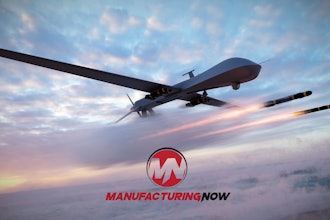The manufacturing industry is constantly changing, especially as manufacturers, hungry for growth, look for ways to expand their businesses. This places new demands on ERP systems — demands that they may not be able to meet. If you have a legacy ERP system or one that was developed in-house, you need to recognize the business changes and workplace challenges that are telling you it’s time to re-evaluate the viability of your present solution.
Nobody really wants to undergo the stress, expense and business disruption of changing out ERP systems, but you won’t achieve state-of-the-art results without state-of-the-art tools for development and process improvement. At this moment you may not need to deliver state-of-the-art results to all of your customers, but it’s likely your major customers want to do business differently right now and as competition increases, you may have no choice but to replace your ERP system — at what will certainly be a less inconvenient time.
How do you know it’s time to make a change?
Experts suggest that the time to make a change is when you need more than your system can offer. You shouldn’t wait until the system fails you to replace it. The people who know the existing ERP system the best — often, the executive who originally championed the system and/or the IT staff who know how it ticks — are typically the most reluctant to admit that it has reached the end of its useful life. They identify with it and see how it has become part of the DNA of the business. While users may still be able to work around the aging system to get their job done, the business case no longer supports keeping the old ERP system. It is constraining growth, to the detriment of other parts of the business.
So how do we go forward?
The very first thing to do in a software selection should be to define the business issues that the company faces (the trigger) and the type and level of performance needed to achieve results (the goal). Discuss these with your value chain partners — both customers and suppliers before you ever consider an RFP for the enterprise application. Understand why the way you collectively work now will not enable you to accomplish your value chain goals and produce satisfactory results. Then figure out what you, your partners and customers must do instead of or in addition to what you now do. Those capabilities are the line items in your RFP. Focus on key industry specific processes and the company’s key differentiators.
So what questions should you ask when it comes time to upgrade or replace your ERP system?
A good bunch to start with includes:
- Hardware decisions should be secondary to finding the right overarching solution. And ‘sunk cost’ should never be a reason to continue down a path that doesn’t fit the real business needs of organization.
- Does the hardware we currently have provide a firm foundation for growth? Does our machine technology offer speed, accuracy, and reliability? Does it scale? What’s its level of interoperability? Can it be upgraded within its operating system family? Do we have the people to support it? Do we need to consider changing platforms? Has it simply outlived its usefulness? If so, are we committed to hosting on premise or should we consider moving to the cloud?
- On the software side, what have we invested in, and how much have we invested? How far from current state of the art technology is it? Can we continue to expand or enhance this software? Are there current industry requirements that we have to handle ‘off line’ because we simply can’t interact with the current host? Will it be adequately supported for the foreseeable future?
- Are we keeping up with the demands of the industry — or more importantly industry requirement?
Next, it’s time to turn your attention to a potential vendor and ERP solution. Consider asking the following questions:
- Does the business logic of the ERP system support the way we do business?
- Is the way we do business today the way we will need to do business tomorrow?
- How does the vendor support the system?
- How do the costs of this new system compare to the benefits?
- What’s my Total Cost of Ownership over 1, 3 and 5 years and how does it compare across vendors – both on premise and on the cloud?
Other important considerations include:
- What about industry-specific functionality? Your industry is unique and your challenges are many. The time it takes from concept to consumer is critical to your success. To ensure the best possible outcome, you need to work with a vendor who understands your industry, inside and out.
- Will the support be there? Just as it takes a village to raise a child, it takes a community of thought leaders, developers, consultants and analysts to support a software solution. Find out who your vendor’s partners are and whether they have the right level of industry understanding – do they have both the tools and the talent? Take a look at the add-on applications available to extend the core business solution. Look at the network of implementation specialists – are they from the parent company or a qualified partner? Who provides help desk support and who comes on site if needed? Does support follow the sun and do they have language skills needed?
- What are the overall cost/benefits? Throughout the process of evaluating your present in-house developed or legacy ERP solution and considering what to do for the future, you have doubtless been doing both informal and formal cost/benefit calculations. Most companies focus on cost savings because they’re easy to identify and can directly impact their bottom line.
Your present ERP solution may have seemed nearly perfect when it was first implemented, but time passes and needs change. When what you have can’t effectively deliver what you need, it’s time to make a move on. Do the work to understand what your company really needs, then weigh the alternatives, and ask the right questions. That way, you’ll have an ERP system that’s as flexible as you need it to be and that lets you spend more time on your core business than on digging up information or making your systems communicate.
Bob McKee is an Industry Strategy Director at Infor.






















